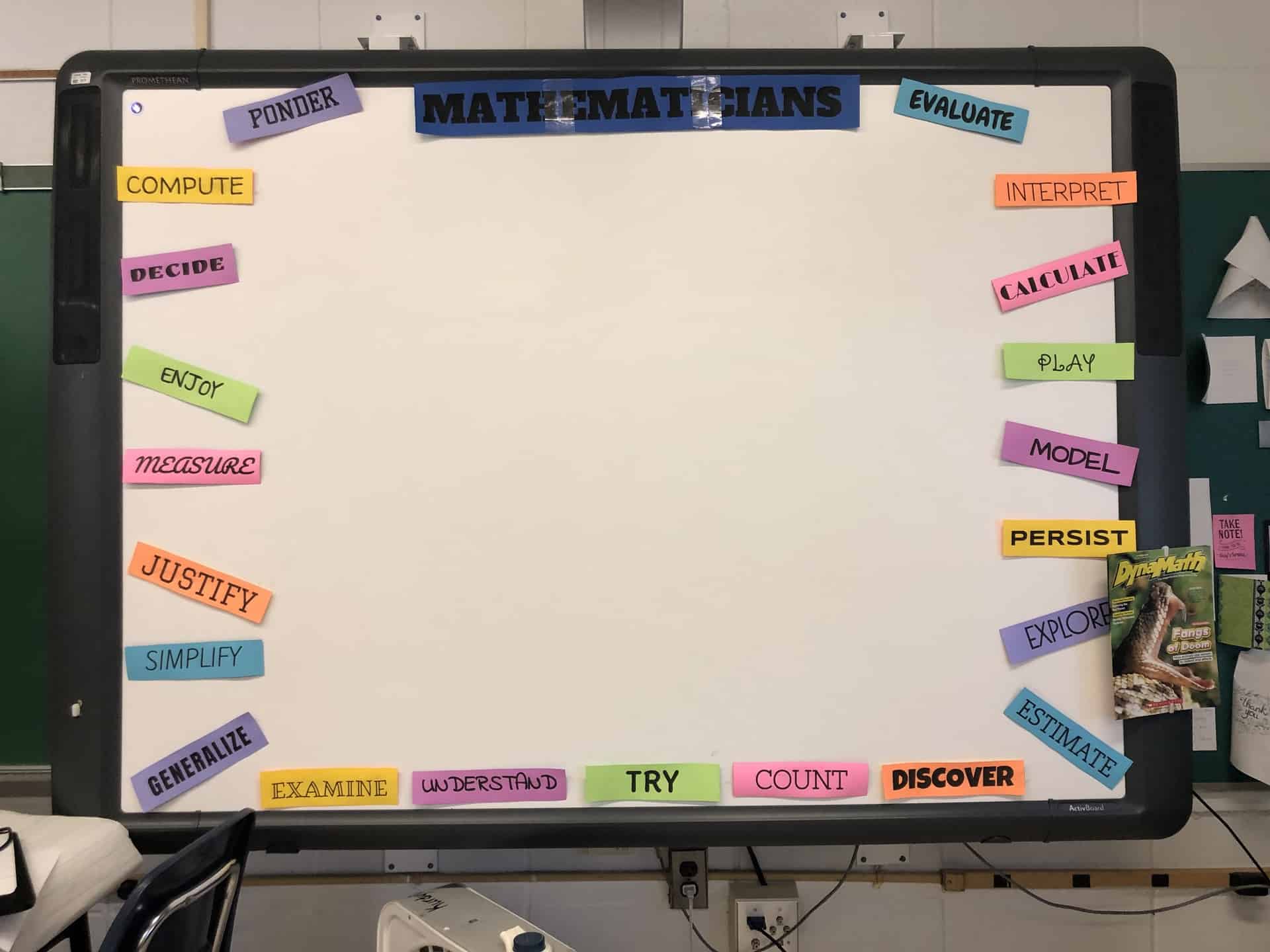This is the first post in the My Perspective series. The series will feature blog posts authored by several educators, each sharing short reflections, tips, advice, and lessons learned on a variety of topics. Today we’ll dig into different ways to use exit tickets!
Quick Checks Across Subjects — Tika Epstein
Exit tickets are an informative way for educators to check to see if our students are understanding the learning targets we are teaching. I use a variety of these “quick checks” with my second graders in reading, math, social studies, and science. My students use whiteboards to show their learning as quick exit tickets at the end of a lesson to check for initial understanding of a concept or skill. I use paper/pencil exit tickets after we have spent a couple of days on a concept or skill in order to drive instruction. I also include a metacognition continuum with the exit tickets to ensure my students share if they: (1) are having productive struggle, (2) need a little coaching, (3) understand the concept but are not ready to coach someone, or (4)understand the concept and are ready to coach someone else. My favorite resource for exit tickets is the Visible Thinking website: visiblethinkingpz.org.
Learning from Misconceptions– Cathy (Carter) Shide
Well-designed exit tickets, that match the goal/objective, are valuable. I always ask: “What does the students’ work show me?” “What do they understand?” “Where do they have misconceptions?” If the work shows some understanding, I love to put up common misunderstandings, along with correct work, and ask students to try to explain the methods/work they see. Students then have to ask themselves: “What do I think is correct and why? What may be incorrect and why?” The best learning comes from these rich conversations! When kids don’t have it at all, it still is good to display the common misunderstandings, show them how I work it, then have them discuss. Why would we have solved it the first way? I get some of the best “OHHHH!” when I am showing them how I solve it right next to their work. They usually can explain their misconceptions and we can build from there!
Keeping Up with the Formatives — Morgan Stipe
This response originally appeared on Morgan’s blog, Mrs. Stipe Math.
Formative assessments, like pretests and exit tickets, are meant to determine where students are at in their learning, along with informing instruction. I’m a big fan and use them almost daily in my classroom. They’re short, sweet, and to-the-point. (And Standards-based!)
Last year, I found myself falling behind in evaluating my exit tickets each day. And then this year, I started down that slippery slope again. Piles. Of. Formatives. I’m not going to lie, it’s a lot of work, “Keeping Up with the Cool Downs,” but I know how valuable the information is for me and the feedback I provide is so important in moving my students’ thinking forward. And then this happened:
Ummm… Yes! I was sitting there, realizing that I need to improve my craft, and I thought, Why not involve my students in the evaluating process? So I made some basket labels and posters of my own and bought baskets the size of half-sheets of paper at Dollar Tree.
To start a new unit, I explained the baskets to my students. The scholars would complete the exit ticket to the best of their abilities, showing all of their thinking, and place it in the basket that was labeled with the level of their understanding of the lesson. To keep this organized, I pick up the formatives after each class, staggering them by basket number, clipping them together by section. It’s been a successful addition to my classroom for several reasons.
I am able to get through the exit tickets with better feedback. With the papers sorted with the students’ metacognition in mind, they’re generally placed into groups with a similar understanding or similar errors. I can fly through the 3’s and 4’s, pushing them to think a little more deeply or prompting them to look a little more closely at computation. I can spend more time with my 1’s and 2’s and the feedback that I provide. Time well spent.
This has been so telling of the students’ confidence levels! Sometimes, that’s the most I can get from this management tool in my classroom. What a story this simple task can tell! If I have a struggling student place a paper in the 4 box, I’m probably looking at it immediately after class to check for success (*insert happy dance GIF here) or a misunderstanding that we need to discuss. When my quick-learners place their paper in a lower number, that’s also a red flag. At a glance, I can better understand where my students are in their thinking and learning, as well as their confidence levels in the skill and objective for the day. One class period I had all students place their formative assessments in the #4 bin! What?! Think about how much a couple of seconds of self-reflection can say!
I have been able to better inform my instruction by implementing this task. Since I have been more successful in handing back the formatives with better feedback, I’ve also been able to use this information in my teaching. We might look at examples as a class with quick Bonus Warm Up activity, like “My Favorite No,” “My Favorite Rough Draft,” or “My Favorite Whoa!” I might check in more often with my students that were challenged by the previous day’s lesson. I’ll look for the ways others are building upon their learning from the previous lesson.
Kate Carter posted about a twist on this idea:
Instead of using the statements for exit tickets, formatives to end a lesson, she used them to check progress to kickstart the class. I appreciate this idea because her students not only marked the level of understanding, but also had the opportunity to defend their choice and ask questions. Wow! I can totally see this being applied to exit tickets, as well. Love.
Some teachers have given these exit tickets in a digital format, like Google Forms. If that’s the case, you could add a linear scale question that looks something like this! When you give the students the opportunity to reflect and evaluate their learning and understanding, more often than not, they’re correct in their thinking. More often than not, I give better feedback. More often than not, learning happens as a result.
When you give the students the opportunity to reflect and evaluate their learning and understanding, more often than not, they’re correct in their thinking. More often than not, I give better feedback. More often than not, learning happens as a result.
Organizing By Error– Karen Hernandez
I categorize exit tickets by three types of errors: reading, misconception, or concept. Once this is complete, I restructure the following lesson around stations so I can target students who were categorized in the misconception or concept error. With these students I can target their mistakes/misconceptions and reteach to help them better understand the concept(s).
Good Mathematicians — Dina O’Brien
I have many verbs around my smart board about what good mathematicians do. At the end of my class with them, I have students either type how they were a good mathematician today or we discuss verbally. I like to also share with them the best thing I saw.
























Great resource- sharing with my student teachers
Glad you like the post! If you need further information on Organizing by Error, I’m happy to help!